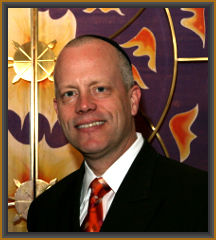
 |
February 11, 2022 (10 Adar I 5782) The Sounds of Silence Dear Friends, I hope this correspondence finds you well and in good cheer. We hope you will join us this Shabbat morning at 10:30am for our services, which will take place in our sanctuary and over our regular Zoom prayer link. Also, please join us this Monday evening at 8pm as we welcome the second guest in our Amazing Author series, Cantor Steven Stoehr, who will share about his play, “The Lost Supper” as well as his children’s book entitled That’s What Friends Do. Steve is a tremendously talented Hazzan, who has served his community in Chicago for over thirty years. Our contemporary world overwhelms us with a cacophonous onslaught of sound and sight. Between the Internet, Tic Toc, podcasts, radios, music, incessant beeps from our cell phones (texts, calendar reminders, etc.) and other media, our world is rarely silent. In this and next weeks’ Torah portions, we continue the description of the building of the Mishkan (Tabernacle) and are presented with the cultic practices of the Kohanim. Rabbi Akiva Richman shares that Parshahs Terumah and Tetzaveh offer a visual landscape of the Mishkan, its structure, its furnishings, and the dress of those who served in it. We also get a sense of the soundscape, or lack thereof. In one scholarly description, this was a “sanctuary of silence.” The Torah doesn’t indicate that any words were recited in the Mishkan, in prayer or in song. In fact, if we picture the Mishkan based on this week’s Parashah, the only sound was from the jingling bells on the bottom of the robe worn by the Kohen Gadol. (To this day, many crowns of the Torah are adorned with small bells to remind us of the Kohen’s dress.) This silence contrasts with later biblical books, in which we see indication of instruments and text of prayers. Perhaps, the resonant sound of these “Priestly Bells” evokes the steady rhythm of the high priest in worship, but also reminds us of caution as we try to approach the Divine. Exodus 28: 33-35 reads, “On its hem make pomegranates of blue, purple, and crimson yarns, all around the hem, with bells of gold between them all around: a golden bell and a pomegranate, a golden bell and a pomegranate, all around the hem of the robe. Aaron shall wear it while officiating, so that the sound of it is heard when he comes into the sanctuary before יהוה and when he goes out.” Close your eyes and imagine being inside the Mishkan. There is no sound except the bells that jingle every time the Kohen Gadol takes a step, as he moves towards and away from an encounter with God. We can think of other times of silence or limited sound, which represent our encounters with God. Recall, that according to the Midrash, the world is silent immediately before the theophany at Sinai. In the Book of Kings 1:19, the prophet Elijah’s encounter with God is described as, “But the Lord was not in the wind; but the Lord was not in the earthquake; but the Lord was not in the fire: and after the fire a still small voice was heard.” Additionally, of course, our central daily prayer is the silent Amidah. And finally, looking cross-culturally, we know that one of the most powerful spiritual tools is the practice of silent, transcendental meditation. Just before Shabbat, many traditional Jews intentionally turn off sounds by silencing cell phones, televisions, and radios. As we enter this Shabbat, may we be reminded of the power of silence, the opportunity to reflect, and the possibility of connection in both sound and silence. Shabbat Shalom, Rabbi Eric L. Wasser, EdD.
|